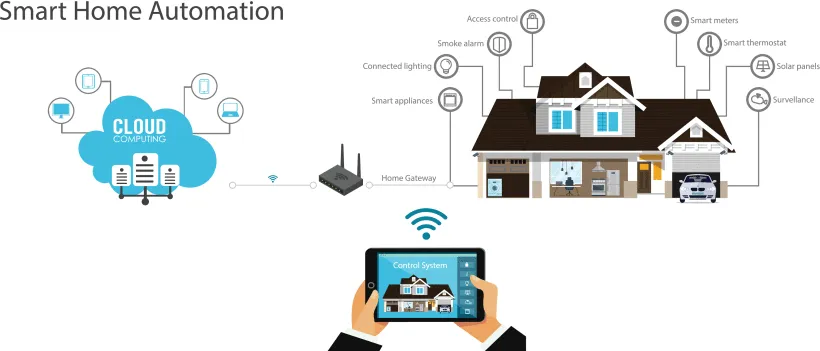Utilizing Blockchain to Overcome Cyber Security Concerns in the Internet of Things
The Internet of Things (IoT) is a wide network consisting of internet connected objects to exchange data using installed software, such as home appliances, vehicles, and other entities embedded with sensors, actuators, radio-frequency identification (RFID), and electronics. Innumerable IoT solutions have been developed from micro to macro scale to make our lives easier.
IoT applications come along with some critical security requirements. Data privacy and anonymity, authentication and identity management, data integrity and confidentiality demand specific attention. As the number of IoT devices and the complexity, mobility and interoperability increase in the network of interconnected things, so does the attack surface and security challenges associated. Practical attacks faced by the IoT networks such as wormhole attacks, sinkhole attacks, MAC address spoofing necessitate the employment of inclusive security mechanisms to help mitigate and prevent security issues.
Blockchain is a technology that permits a group of unreliable actors to verify transactions. It constructs information in the form of a chain of blocks. Each block in the chain stores some transactions that can be carried out at a specified time. Each block has a reference to help link the consecutive blocks together to form a chain.
The integration of the IoT with blockchain can provide IoT applications with security and reliability. It can improvise the current IoT services by bringing in decentralisation and scalability, advanced security, and traceability. It can eliminate the dependency on the servers and help in creating unique identity of the devices. It can speed up the creation and spread of new IoT business applications. The middleware of IoT devices can be securely updated, and the code can be safely inserted in the devices using the immutable storage characteristic of blockchain.
The integration comes along with its limitations as well. Scalability and storage capacity is an issue since blockchain transactions are designed for computers with suitable power. Data is generated in some gigabytes in IoT devices which poses a great challenge to handle. Several solutions are thought of to reduce the consensus latency, improve scalability and enhance storage efficiency.
Nevertheless, IoT will be able to see advanced security enhancements in the applications. The integration with blockchain will solve complicated issues like data privacy owing to the cryptographic algorithms, and end-to-end traceability of data will increase reliability.
High processing power and memory won’t be necessary for authentication and identity management. CIA shortcomings will be solved by unique identifiers and security protocol certificates. There is a lot of future scope for research and the integration is without a doubt promising.




